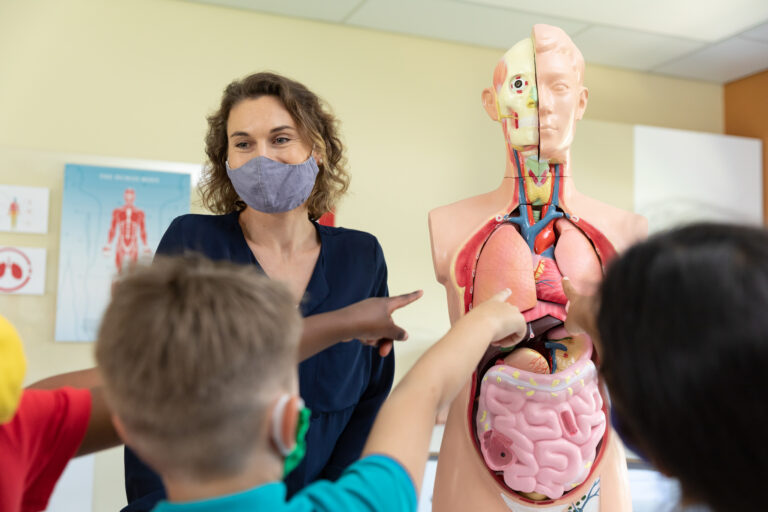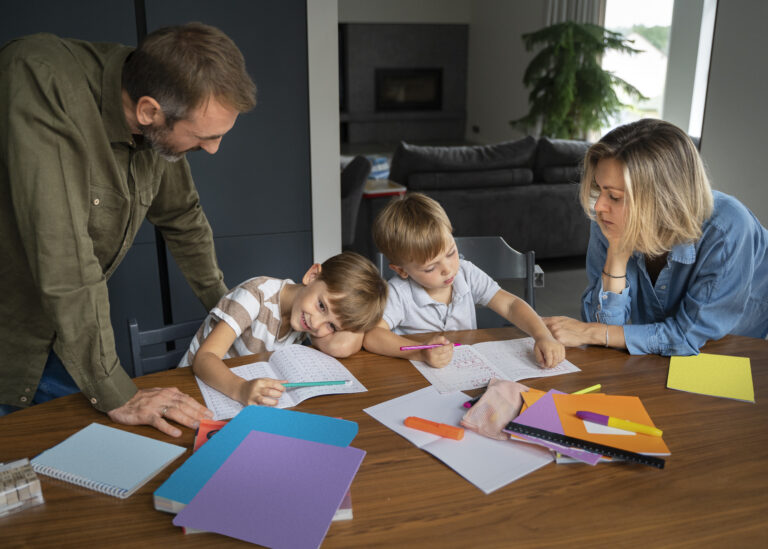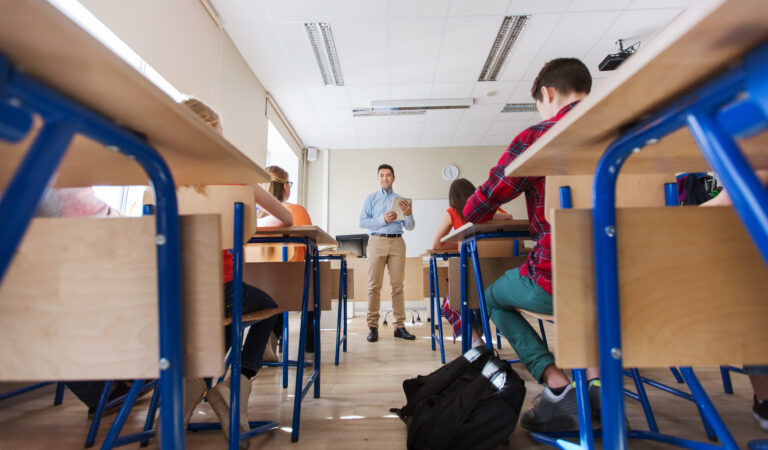This is the fourth in a series of posts about engaging your students in puberty class. Read Part 1 HERE.
Strategy #4 – Work in Small Groups
One effective strategy to engage students in puberty class is by asking students to work in small groups. By organizing students into small groups, educators can provide opportunities for active participation, critical thinking, and cooperative learning. Small group work also teaches the skills needed for collaboration. In this blog post, we will explore things to consider when engaging students in small group work, as well as strategies to use such as cooperative learning, project-based learning, and gallery walks or carousel brainstorms.
Group Formation:
- Optimum Number: When forming small groups, it is essential to determine the optimum number of members. Research suggests that groups of three to five individuals tend to be most effective, as they allow for sufficient interaction and participation [1].
- Group Formation: Various methods can be used to form groups, such as self-selection, random selection, or purposeful selection. Educators can choose a method based on their specific objectives. Self-selection may encourage student ownership, while purposeful selection can promote diversity or skill-based collaboration.
- Assigning Group Roles: Designating roles within a group fosters shared responsibility and enhances individual accountability. Roles like leader, reader, spokesperson/reporter, recorder, timekeeper, and materials collector distribute tasks, ensure smooth group functioning, and engages every member of the group.
- Task Explanation and Timeline: Clearly communicate the task to the groups and provide a timeline to guide their progress. This helps students understand expectations and manage their time effectively.
- Providing Materials: Ensure that the groups have access to the necessary resources and materials to complete their tasks successfully.
- Monitoring the Work: Regularly monitor the groups’ progress, offer guidance when needed, and provide constructive feedback to enhance their collaborative skills.
Cooperative Learning:
Cooperative learning is a valuable approach that encourages teamwork, interdependence, and communication. Its key components include:
- Interdependent Teams: Foster an environment where each member’s success is linked to the overall group’s success, promoting collaboration and support among students.
- Group Goals: Establish clear, shared goals for the group, encouraging them to work together towards a common objective.
- Individual Accountability: Hold each student accountable for their contributions to the group. This can be achieved through individual assessments, peer evaluations, or structured reflections.
- Communication and Problem-Solving Skills: Provide explicit instruction on effective communication and problem-solving strategies, enabling students to effectively express ideas, resolve conflicts, and reach consensus.
- Integration with Other Structures: Integrate cooperative learning with other instructional strategies and activities, such as discussions, debates, or project-based learning, to enrich the learning experience.
Project-Based Learning:
Project-based learning (PBL) is an immersive approach that promotes deep learning through the completion of real-world projects. By assigning group projects, educators can leverage small group work for collaborative problem-solving, critical thinking, and creativity (Buck Institute for Education, n.d.). PBL allows students to apply their knowledge and skills in meaningful contexts, fostering a sense of ownership and engagement.
Gallery Walk or Carousel Brainstorm:
Gallery walks or carousel brainstorms offer opportunities for small groups to share and discuss their work with others. Students rotate through different stations or displays, providing feedback, insights, and alternative perspectives. This strategy promotes active participation, reflection, and appreciation for the diversity of ideas within the classroom [2].
When students work in small groups, student engagement increases. Added benefits include enhanced collaboration and critical thinking among students. By implementing cooperative learning, project-based learning, and strategies like gallery walks or carousel brainstorms, educators can create dynamic learning environments that foster active participation and deeper learning.
This is part 4 of a six-part series on Engaging Students in Puberty Class. Read part 5 HERE.
Resources:
- Cooperative Learning, Starting Point
- Making Cooperative Learning Powerful, ASCD
Credits:
[1] Slavin, R. E. (2015). Cooperative learning in elementary schools: Effects of the Jigsaw II on student achievement, retention, and attitudes. Journal of Educational Psychology, 107(2), 455-467.
[2] Doherty, I., & Hilborn, J. (2019). Engaging students in the mathematics classroom: Using a gallery walk to promote communication and collaboration. Mathematics Teaching in the Middle School, 25(6), 378-386.
This blog post incorporates material requested via Chat GPT.



